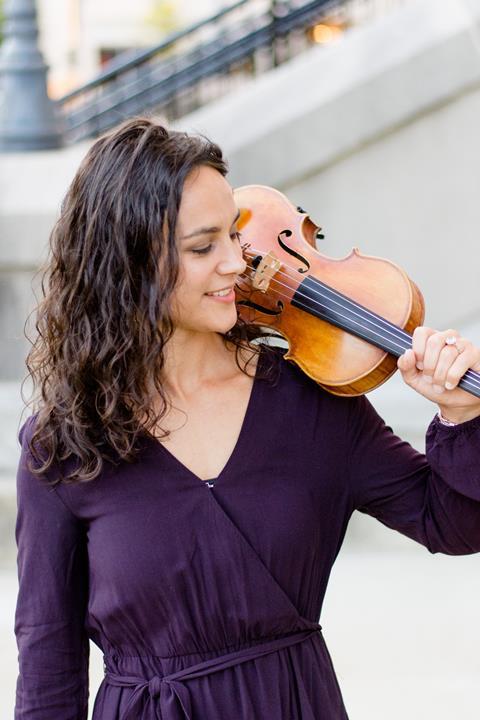Find a teacher that has your best interests at heart, writes the violinist

Discover more Featured Stories like this in The Strad Playing Hub
In the world of private violin lessons there’s really no official criteria that teachers have to meet. Unlike the public education system where music teachers are required to receive a bachelor’s in education, private lessons can be taught by anyone who has proficiency on the instrument. Violin teachers may have an education degree or Suzuki training, or they may have a degree in performance, composition, or music theory. While a music education degree may be preferred when looking for a private teacher, that doesn’t mean someone without one isn’t qualified. Here are some qualities and characteristics you should look for in a private violin teacher.
1. They’re humble enough to admit that they don’t know everything
A good teacher is teachable. They’re willing to learn from their students, colleagues, and the world around them. While they are a specialist and expert in their field, it would be arrogant to claim they’ve nothing left to learn. Good teachers understand this and are willing to consider other viewpoints. Even if, at the end of the day, they decide their original position is the better course of action.
2. They don’t just give you ’bandaid fixes’ but instead consider the bigger picture
Good teachers recognise that no two students learn the same and that each individual comes with their own personal background and experiences. While there are some foundational truths and processes that stay the same, a good teacher treats each student as an individual case to diagnose the underlying problem. For example, two students may both be struggling with a poor bow hold but, one could be the result of weak finger strength and the other could be from shoulder tension. However, this isn’t observable unless the teacher takes the time to know their student and dive into the underlying cause.
3. They’re willing to refer to their colleagues who may be better equipped in a certain area
It can be easy to fall into a competitive mindset as a teacher and not want to ‘share’ our students with others. Many times this stems from our own insecurities as violinists and teachers, but this is a disservice to our students. If a teacher has a student who’s struggling with pain while playing, it would be wise and beneficial to refer them to someone who specialises in the Alexander Technique or the Timani Method. Without this specialised education, the pain may increase and cause future injuries.
Read: Do adult beginners learn differently from kids?
Read: 10 tips on how to stay motivated as an adult beginner violin student
4. They listen to their students and adjust accordingly
While a student may not always know what’s best, sometimes adult students may have long term goals or topics they’d like to pursue and discuss with their teacher. But, no matter the age of the student, teachers can ’listen’ to them in other ways. They can watch their body language and take breaks if need be. They can be aware of their student’s emotional needs and adjust the pace and structure of the lesson. They can look for struggles that the student may be nervous to admit. When a teacher truly listens, that’s when they start to learn more about their student as a whole person and can teach more effectively.
5. They’re patient and thorough when they educate their students on why they think a certain approach may be best
At the end of the day, violin teachers are the authority and expert. Even though a student may not understand, they’ll need to learn and trust their teacher’s expertise and experience. However, a good teacher can help their student by being patient and thorough in their explanation. This doesn’t just help build trust, but it also lays the stepping stones for deeper understanding down the road.
Good teachers make their students feel safe, heard, and cared for. I want to encourage everyone with a desire to learn the violin to find someone who doesn’t just treat you like a number, but truly sees you and the unique story you bring to the table.
You can follow me for more violin education on Instagram @rachael.ridge or join the Facebook Group at The Adult Violin Academy.
Read: The anatomy and function of the bow arm: violinist Rachael Ridge
Read: The importance of body awareness in violin playing: Rachael Ridge
Read more Featured Stories like this in The Strad Playing Hub
The number one source for playing and teaching books, guides, CDs, calendars and back issues of the magazine.
In The Best of Technique you’ll discover the top playing tips of the world’s leading string players and teachers. It’s packed full of exercises for students, plus examples from the standard repertoire to show you how to integrate the technique into your playing.
The Strad’s Masterclass series brings together the finest string players with some of the greatest string works ever written. Always one of our most popular sections, Masterclass has been an invaluable aid to aspiring soloists, chamber musicians and string teachers since the 1990s.
This year’s calendar celebrates the top instruments played by members of the Australian Chamber Orchestra, Melbourne Symphony, Australian String Quartet and some of the country’s greatest soloists.





































No comments yet